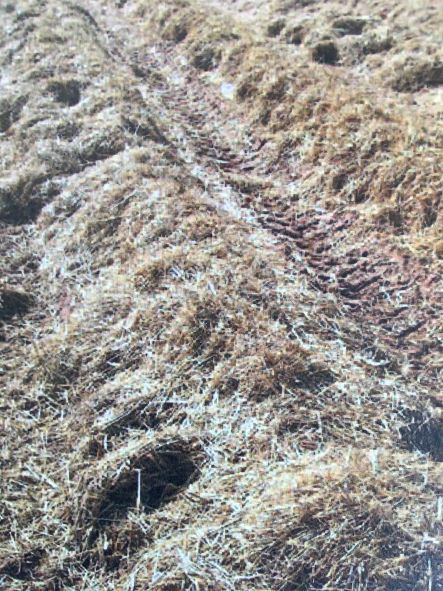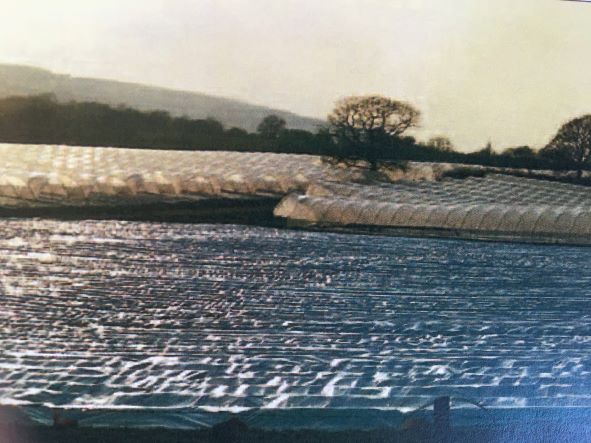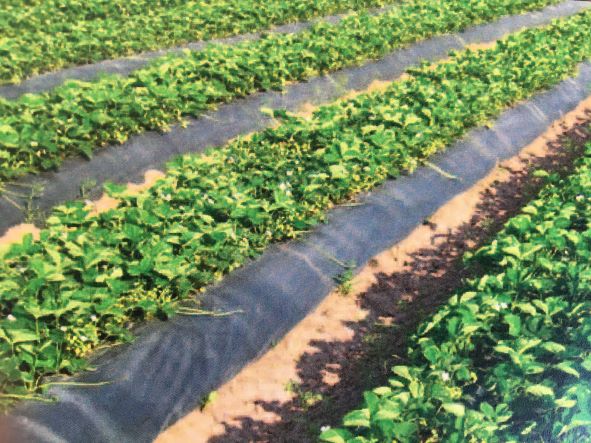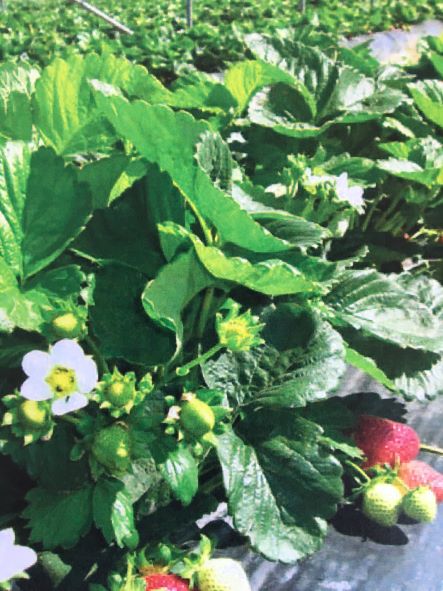Please click here to access the main AHDB website and other sectors.
- Home
- Knowledge library
- Producing strawberries outdoors
Producing strawberries outdoors
Details of all the outdoor techniques for growing strawberries, including those for delayed field production and mid-season cropping.
Outdoor, unprotected field production – for cropping mid-season
To ensure production throughout an entire season, it is still necessary for growers to produce strawberries in the traditional UK season (June-July).
Given the increasing demands by supermarket retailers for high quality produce, most supermarket growers now cover those crops scheduled for June/July cropping.
However, the tunnels are not clad until immediately prior to harvest to ensure that the fruit is picked in the traditional period.
Outdoor delayed field production
The delayed field crop system is used to hold back the cropping period of soil-grown main season varieties that would usually crop in June and early July.
The exact cropping season will depend on the weather and variety being delayed.
In general, it is prudent to use a strong field of either mid or late season varieties to accentuate their delay in production.
Timing
The delay in cropping can vary between 7 and 14 days, depending on the exact timing of operations.
Two methods are used to delay cropping.
Both rely on the same principle - the exclusion of light from the onset of spring growth:
- Deep straw.
- White-on-black polythene.
Both of these techniques tend to suppress plant vigour to some extent, leading to reduced yields and variable fruit quality.
Delayed cropping is, therefore, usually reserved for over-vigorous plantations in their final cropping year. Yields are typically reduced by around 20%.
Deep straw
The most common method used to delay outdoor crops is deep straw which, as the name suggests, uses a deep layer of straw to smother the plants.
Deep straw used to delay cropping

Image © ADAS
This is usually laid in late winter (January-February) in cold/frosty conditions.
The straw not only excludes light, but also traps cold air around the plants, further reducing the growth rate.
Straw removal
The timing of straw removal depends upon the vigour and appearance of the plants, with April being the most common time.
The straw is gently drawn back from the plants, which are allowed to develop through the straw.
The straw also protects young growth from cold winds.
White-on-black polythene
White-on-black polythene has been used more recently.
Polythene sheets are laid over the top of the crops and weighted down with the white side uppermost.
Crop covered with white on black polythene

Image © Hagrove Ltd.
This excludes light from the plants.
Extra weights
As the polythene sheets are not perforated, extra weights are required to avoid sudden up-lift.
The sheets are usually laid for only four to six weeks as the exclusion of light can significantly weaken the plants.
They are laid in early March and removed from early to mid-April, depending on the vigour of the plants.
Outdoor field, 60-day and tabletop production
Any main season variety that has initiated flowers in response to shortening day length and fall in temperature can be kept in cold storage for several months.
It can then be planted out at a pre-arranged time with the aim of harvesting it some 60 days later.
High temperatures can lead to harvest as little as 40 days after planting.
Outdoor sites
The variety Elsanta lends itself well to such manipulation and can be planted from late April until July on outdoor sites to crop some 60 days later.
Crop of 60-day Elsanta at green fruit stage

Image © ADAS
The plantations can then be kept for cropping again the following season.
The 60-day cropping system offers growers an ideal way to extend the season of production into late summer and early autumn.
Varieties such as Elsanta and Sonata respond well to this form of manipulation.
Outdoor and protected field everbearer production
As everbearing varieties produce flowers irrespective of day length, they can flower and fruit at all times during the growing season.
They therefore lend themselves particularly well to manipulation.
With everbearers, the winter and spring flower is usually removed to allow the plant to grow its leaf canopy.
The early summer-initiated flowers are then allowed to develop from late May onwards, so that the first fruits start to ripen in late June and early July.
First frosts
Thereafter, all new flowers are allowed to continue to develop and produce fruit until the first frosts occur.
Crop of Everest in full production

Image © ADAS
Where growers wish to extend the season of production into late October and November, field-grown crops of everbearers can be covered with portable French or Spanish tunnels.
The majority of field-grown everbearers are now covered with tunnels to comply with supermarket customer quality requirements.
However, in many cases the tunnels are not clad until the onset of harvest.
This avoids increases in temperatures early in the season, which can give rise to thermodormancy in the plants.
Portable tunnels for tabletop everbearers
Where portable tunnels are used with tabletop everbearers, the system of production is almost identical to that described for tabletop production of main season varieties under tunnels.
And, like field-grown everbearers, the spring flowers are removed to delay cropping until early July onwards.
Original authors
Scott Raffle, AHDB, Robert Irving, ADAS and Graham Moore, FAST Ltd

